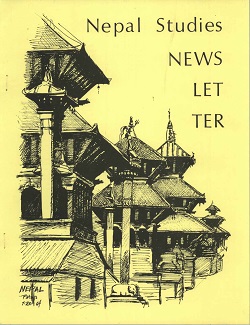Author Biography
Anna Sehnalova (M.Phil., Tibetan and Himalayan Studies, University of Oxford, 2013; Ph.D., Oriental Studies, Charles University, Prague, 2018) is currently a D.Phil. student in Oriental Studies at the University of Oxford. Her research interests focus on Tibetan cultural reflections of landscape and wildlife, animals and plants, including their perception and use for treatment in Tibetan medical and ritual traditions. She is also interested in Tibetan mountain cults within their broad socio-cultural and historical contexts.
Abstract
This article explores the complexities of accomplishing potency, nüpa (nus pa), within a Tibetan healing, rejuvenation, and longevity ritual practice known as ‘medicinal accomplishment,’ mendrup (sman sgrub). The study is based on the observation and examination of the Light-Swirled Mendrup performed in the Tibetan exile Bonpo community in Nepal in 2012. The mendrup represents a meditative sādhana practice, which involves the production and consecration of ritual materia medica derived from the Tibetan medical Sowa Rigpa tradition as well as Buddhist tantric heritage. The article analyzes the generation of potency based on spatiality within the mendrup ritual—the potency of the ritual itself and of its main substance, the consecrated ritual materia medica referred to as ‘mendrup medicine.’ It argues that within its cosmological scheme, the mendrup ritual follows a spatial pattern of categorization of substances that impacts their potency based on their pharmacological properties and effects. This categorization reflects the ritual’s categorization of diseases. The ritual incorporates various spheres of knowledge into its notions of potency, such as medicine, pharmacy, and botany. The organizational cosmological scheme of the ritual, with its central mandala comprising the five directions and the five fundamental elements, structures the space of the ritual, and also its consecrated medicines. The scheme structures and generates the potency of the ‘mendrup medicine’ substance. Other aspects co-create the potency: the deities invoked, the acting religious figures and their blessings, suitable medicinal ingredients used, the right ‘fermenting agent,’ the depth of meditation of the performers, proper empowerment practices, and the time and space of the rite. This study shows that it is also the allocation of specific substances into particular spatial arrangements that makes them potent, especially in relation to the whole of the ritual space. The Bonpo Light-Swirled Mendrup creates this structure of potency through its fivefold mandalic scheme typical of tantric ritual.
Acknowledgements
The author gives her heartfelt thanks to the community of Triten Norbutse monastery, particularly to Yongdzin Rinpoche, Khenpo Tenpa Yungdrung, Amchi Nyima, and Takla Tarwa. The author is also indebted to Nyima Woser Choekhortsang and Changru Tritsuk Namdak Nyima from the exile Menri monastery. The author is grateful to the special editors, Barbara Gerke and Jan van der Valk, and to Jill Sudbury for English corrections. This article is a result of the Project ‘Plant Hunting as a Phenomenon of Science, Culture and Mentality of the 19th and Early 20th Century’ based at the Faculty of Science, Charles University, Prague, and funded by the Grant Agency of Charles University (GAUK, project no. 269415), 2015-2017. The fieldwork in Nepal was sponsored by the Oxford Centre for Buddhist Studies and the Oxford Vihara.
Creative Commons License

This work is licensed under a Creative Commons Attribution-Noncommercial-No Derivative Works 4.0 License.
Recommended Citation
Sehnalova, Anna. 2019. Medicinal Mandala: Potency in Spatiality. HIMALAYA 39(1).
Available at:
https://digitalcommons.macalester.edu/himalaya/vol39/iss1/15
Figure 1
Fig 2.JPG (4174 kB)
Figure 2
Table 5.docx (19 kB)
Table 5
Table 5 PDF.pdf (37 kB)
Table 5 PDF
Table 6.doc (77 kB)
Table 6


